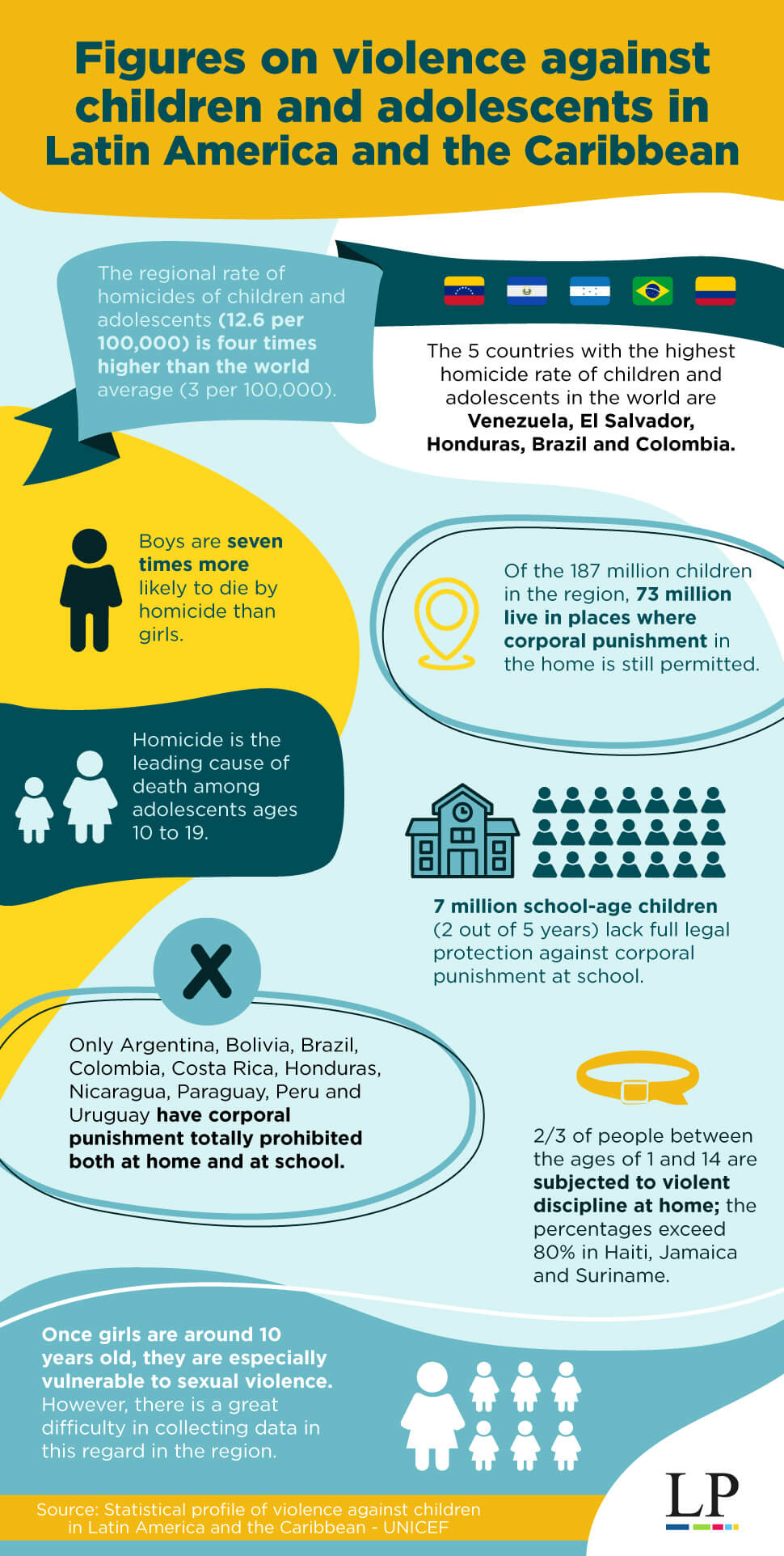Infographic: Violence against children in Latin America is up to 4 times higher than the average
A regional report made by UNICEF reveals that almost 2 out of 3 children and adolescents experience violence at home. We tell you about the worrying panorama in the region .

Photo: Freepik
LatinAmerican Post | María Fernanda Ramírez Ramos
Escucha este artículo
Leer en español: Infografía: Violencia contra la infancia en latinoamérica es hasta 4 veces mayor que el promedio
The scenario for the majority of boys and girls in Latin America and the Caribbean is not ideal for the development of a childhood with a safe and protected environment. This is confirmed by a statistical profile carried out by the United Nations Children's Fund, UNICEF.
By multiple measures, the region is the most violent area in the world. Childhood and adolescence today are especially vulnerable to this violence, which has negative consequences for the full development of people and which, in turn, fuels cycles of violence.
“Adults often resort to violence against children and adolescents because it is what they know and have experienced. To break this cycle in time, we have to act soon by promoting alternatives. With the commitment of parents, caregivers, teachers, communities and governments, it is possible to raise children and adolescents without violence and build safer and more prosperous societies for the benefit of all," said Abdel-Jelil, UNICEF Regional Director for Latin America and the Caribbean in a press release.
We recommend you read: 1 out of 3 Children has Lead in their Body. How to Avoid Exposure and Poisoning?

The “dominant patriarchal culture, low awareness among caregivers of effective non-violent disciplinary methods, authoritarian social norms, weak governance systems, corruption, organized crime, narco-economies, urban marginalization, gun proliferation small and light, and inflexible security policies" are some of the reasons that explain the high numbers of violence against children and adolescents, UNICEF said in a statement. Likewise, it ensures that factors such as inequalities, insecurity, humanitarian crises and migration drive violence, in addition to threats to gender equality and violation of the rights of the LGTBIQ+ community.




